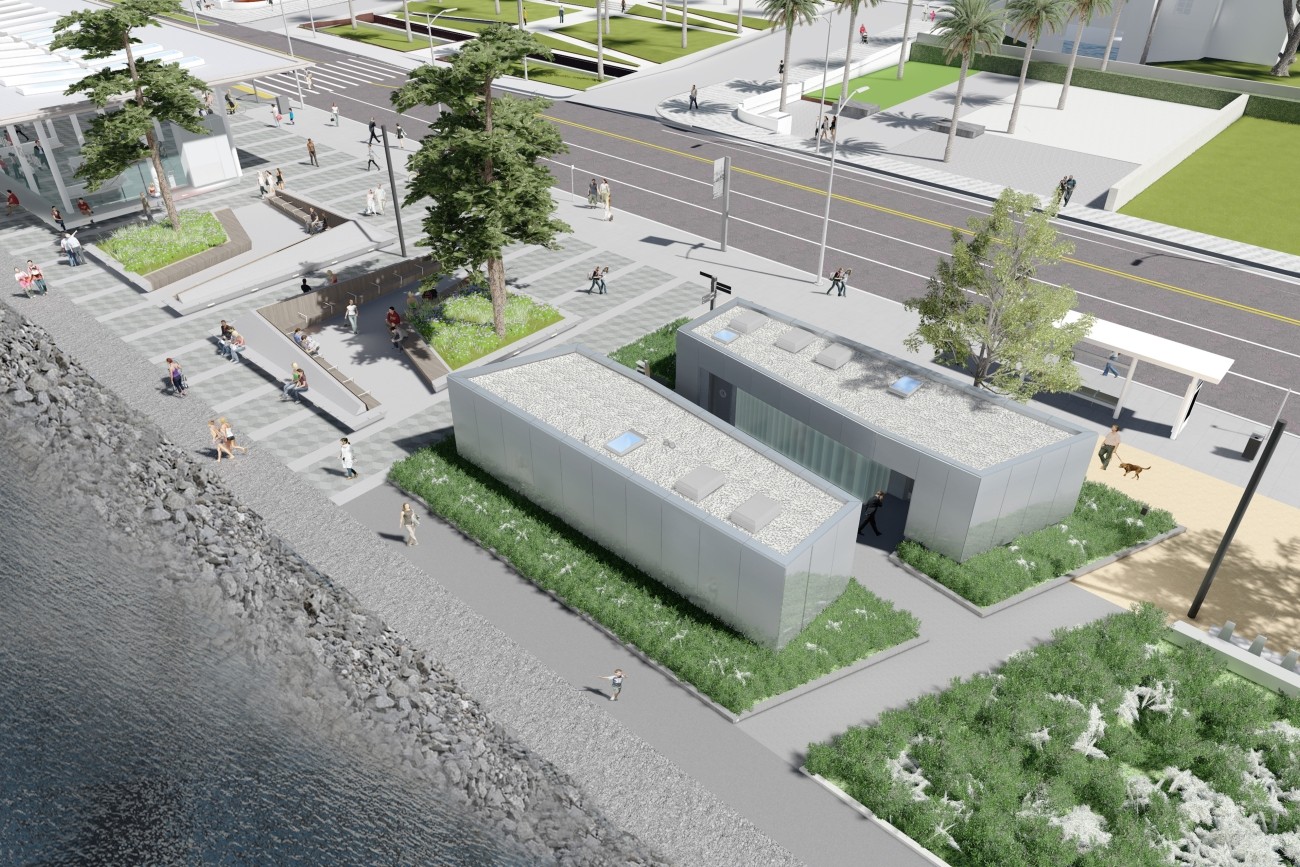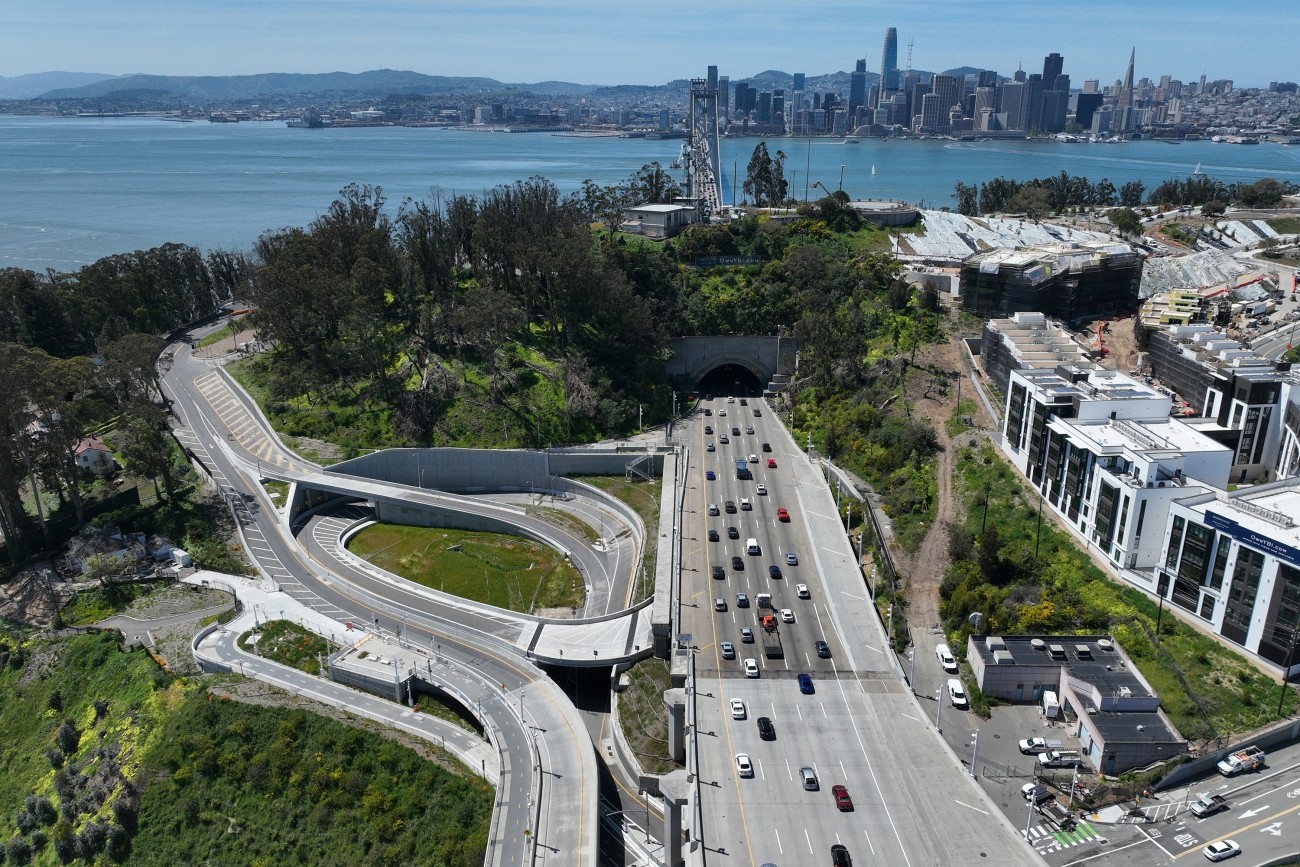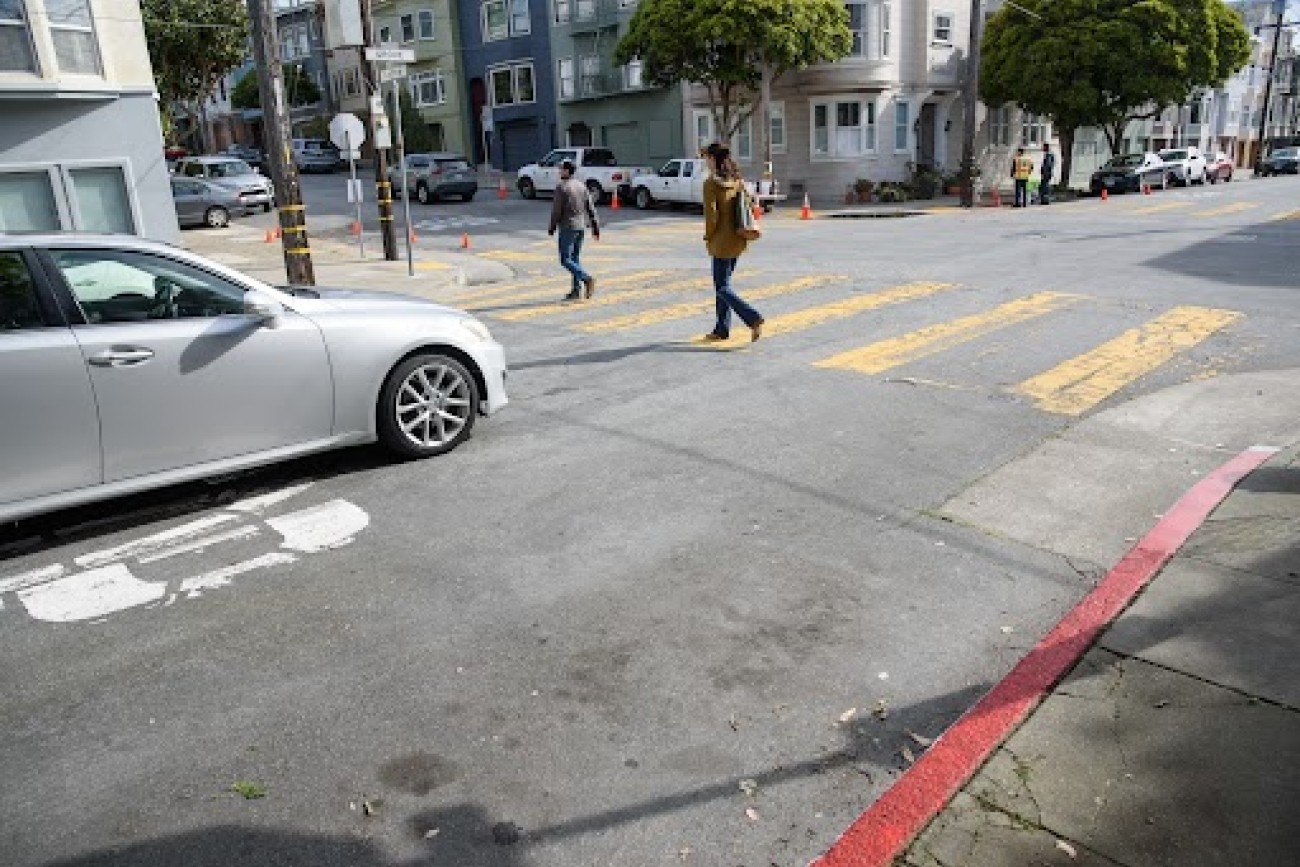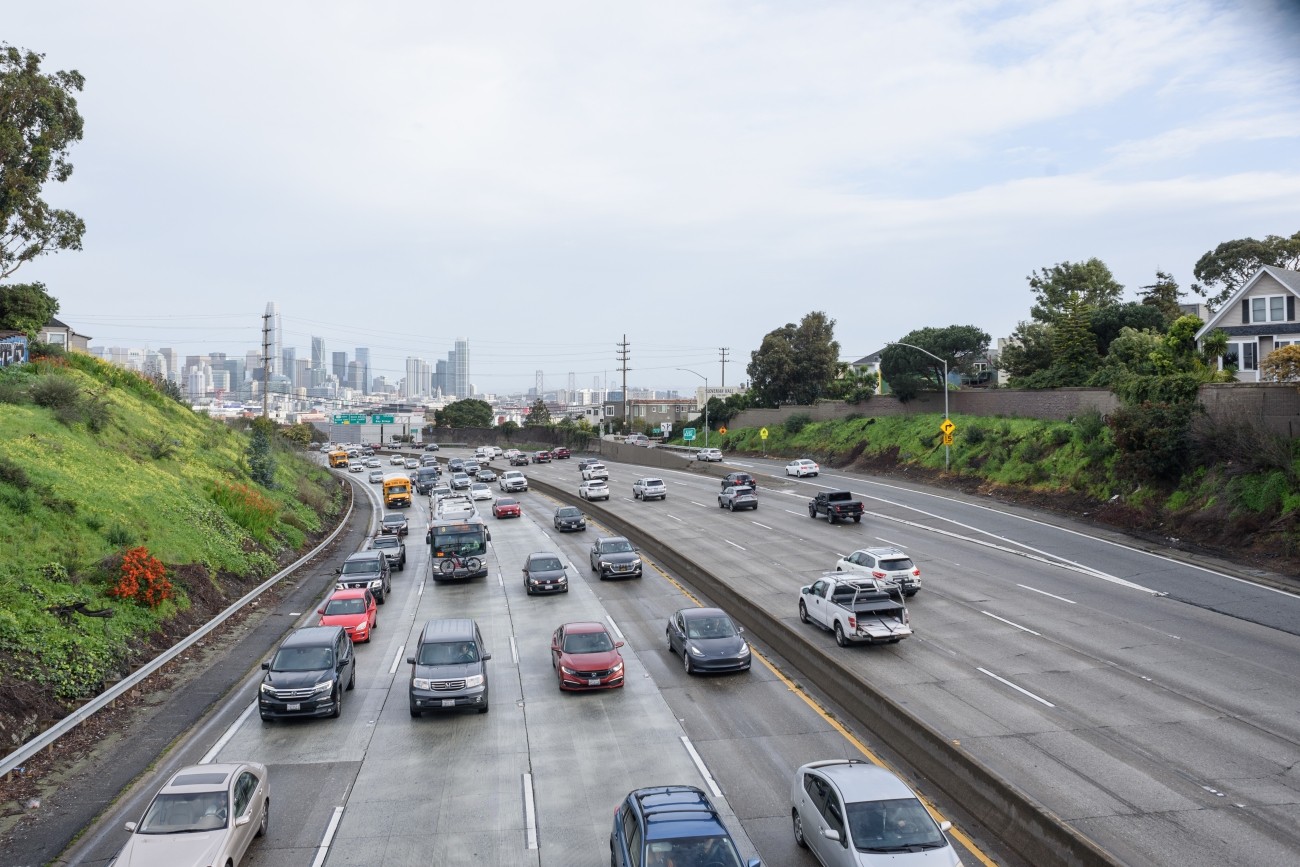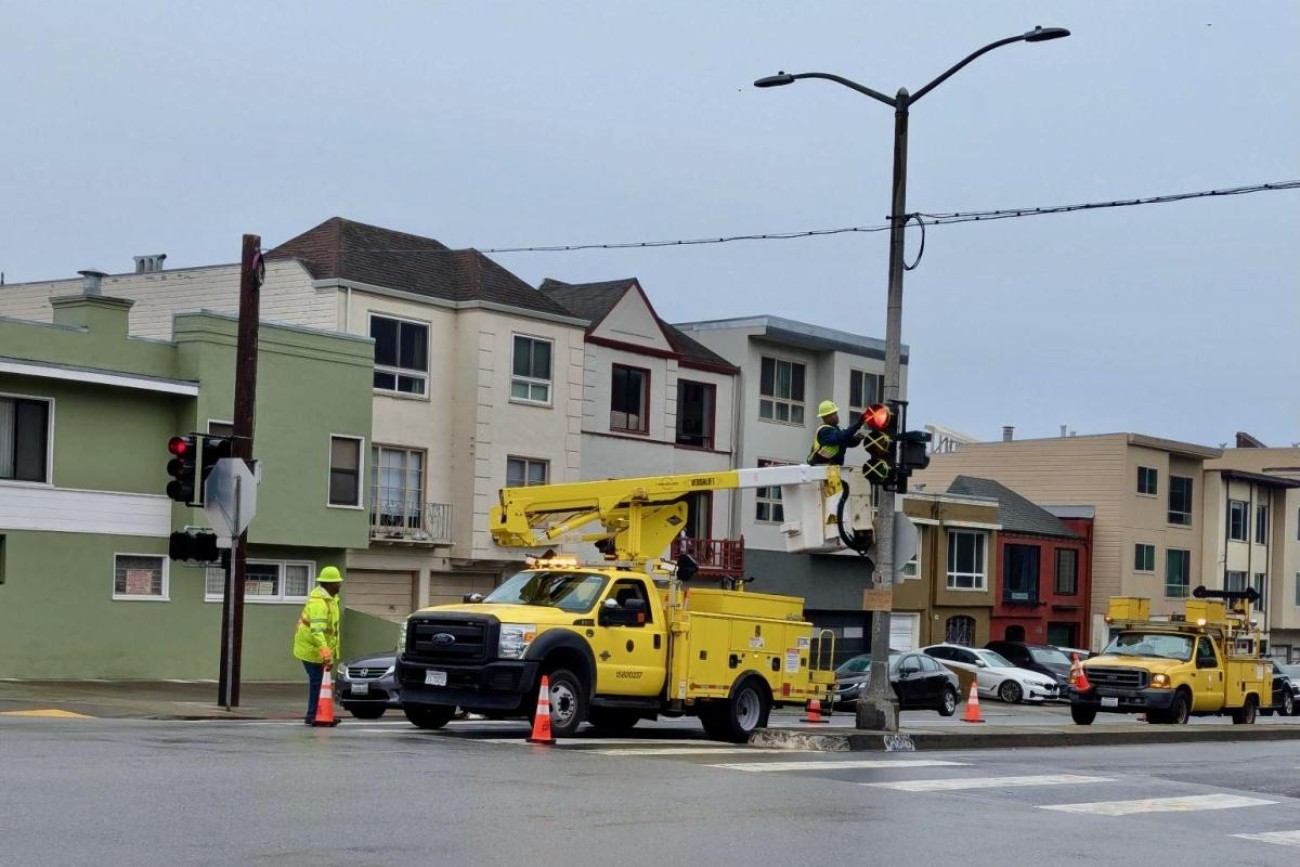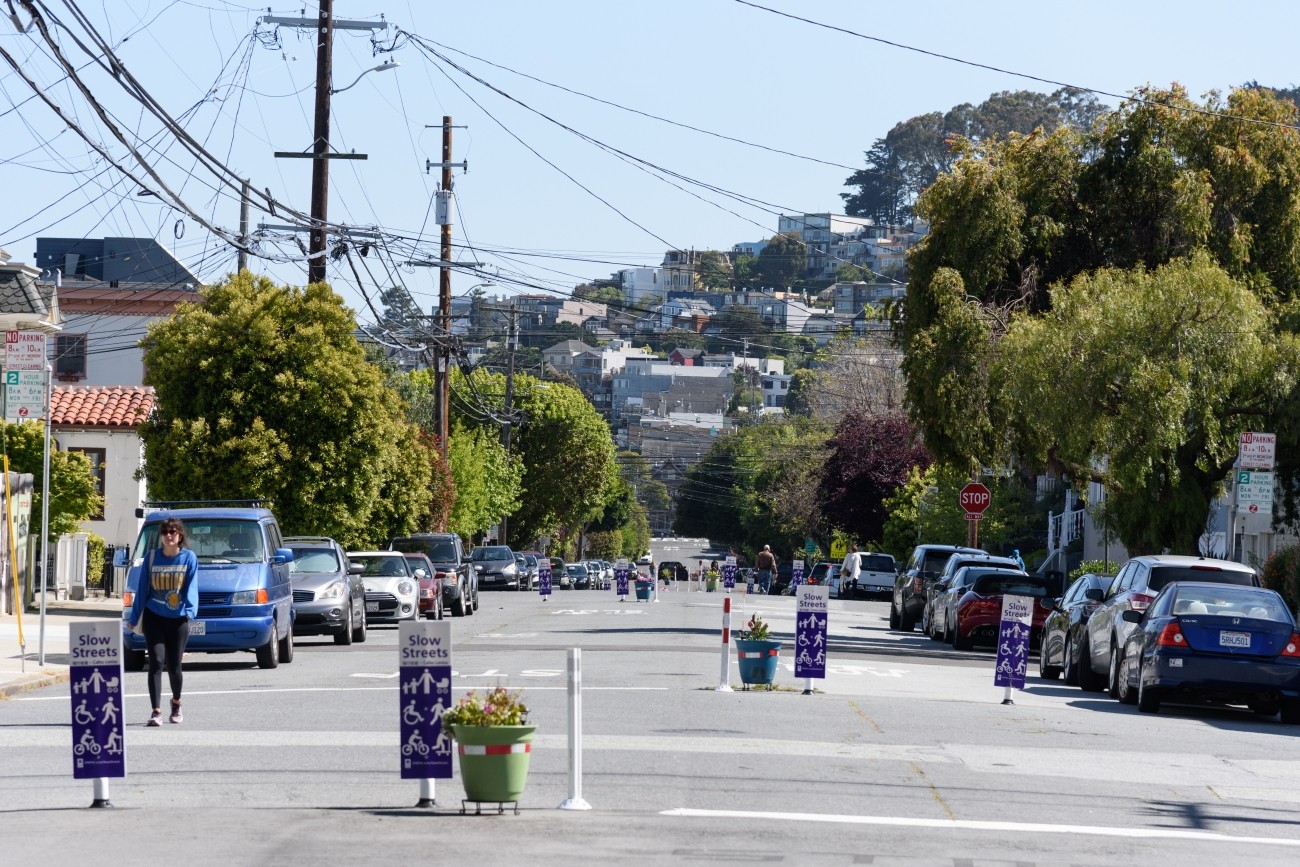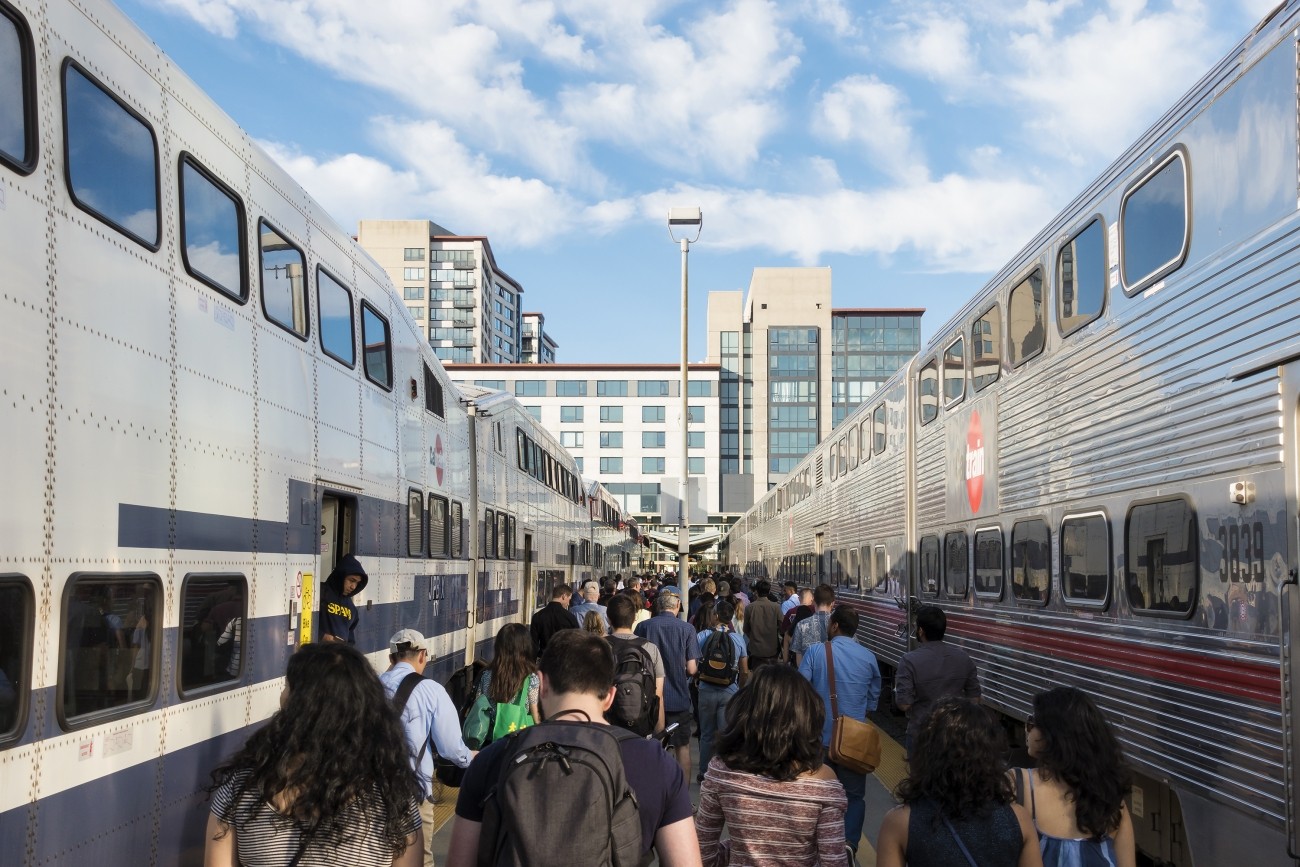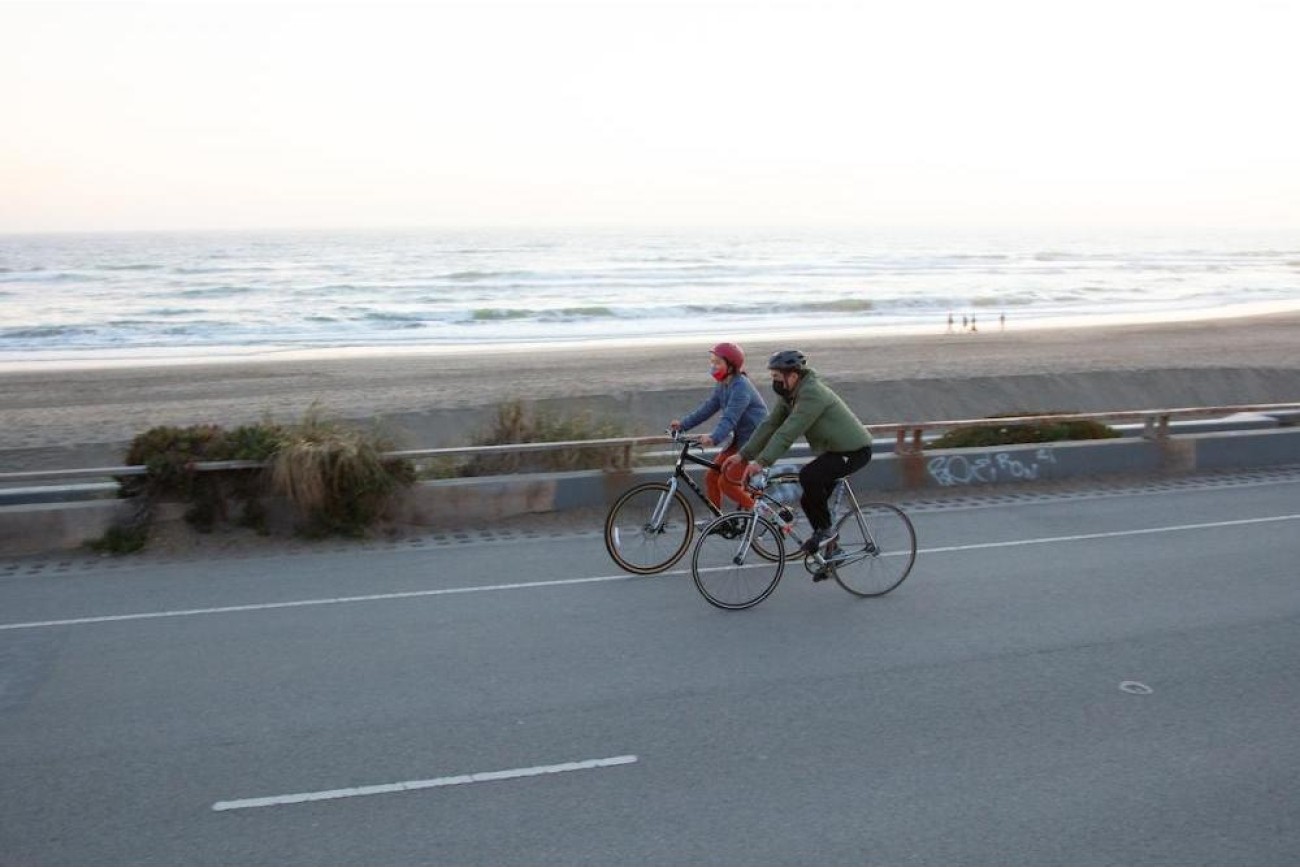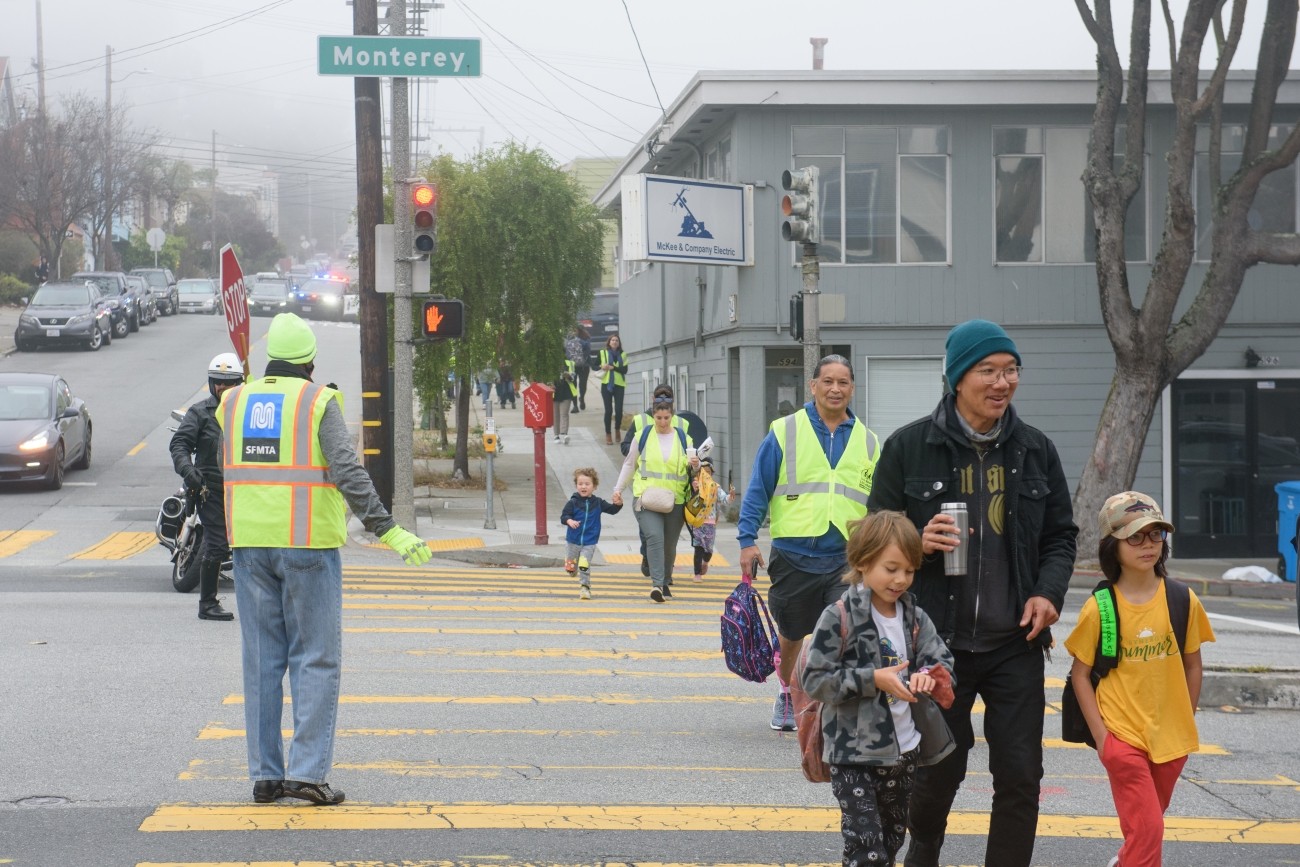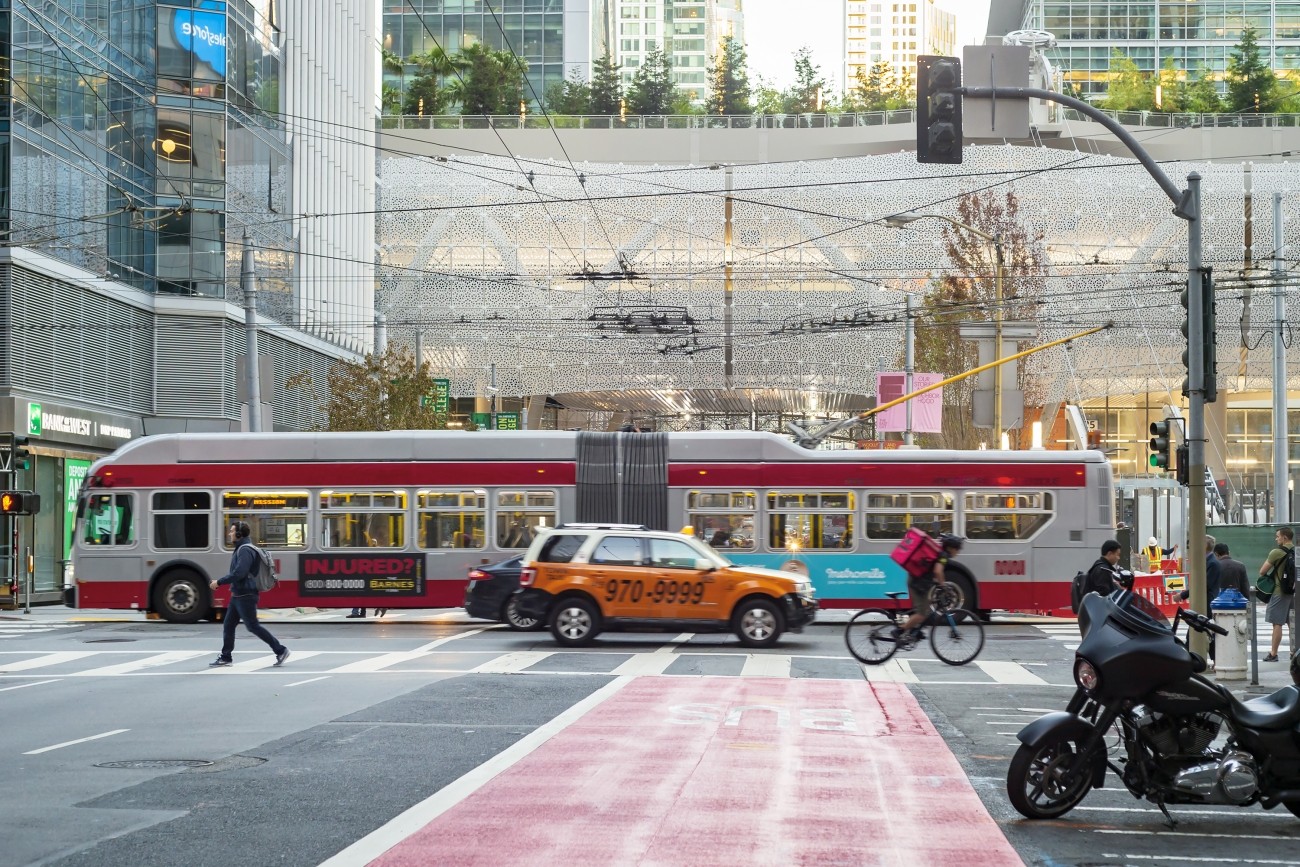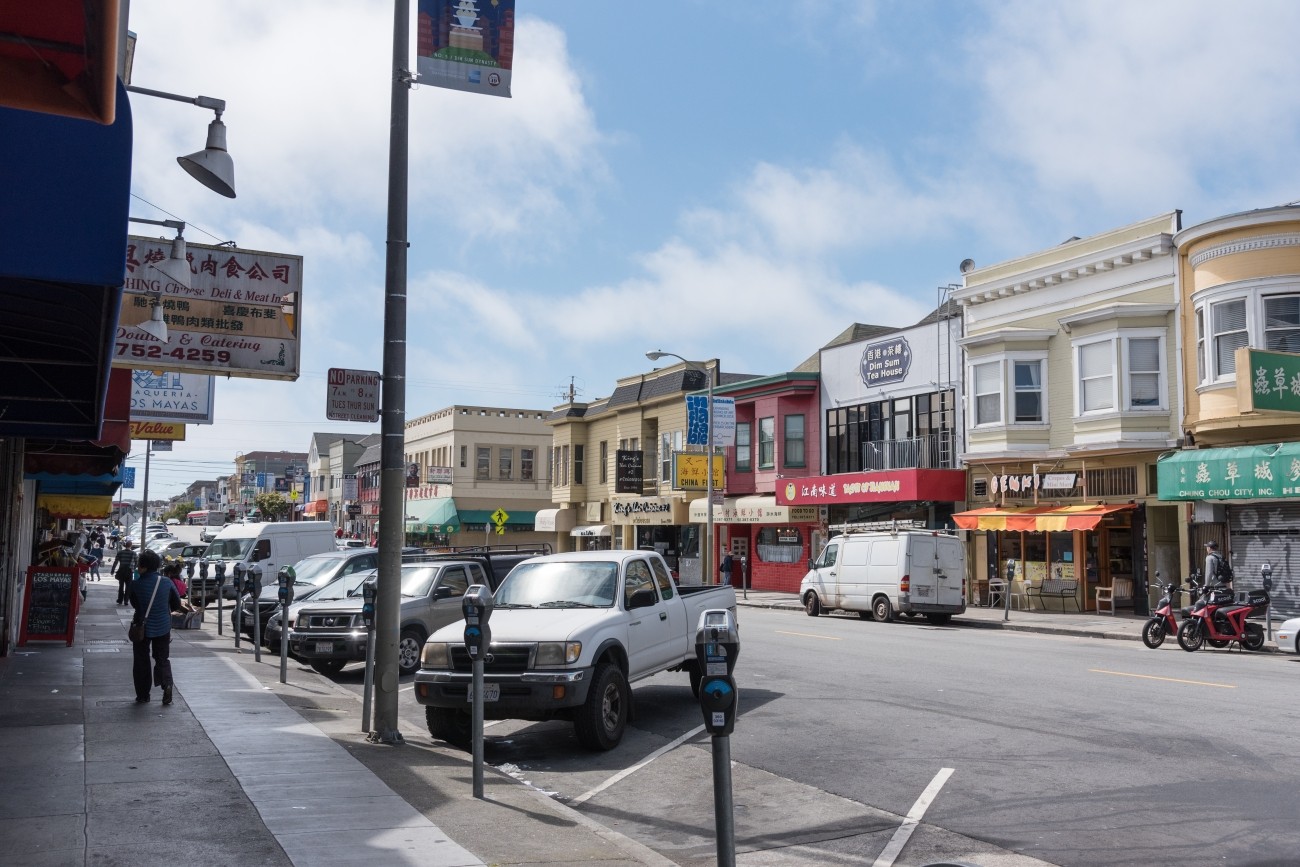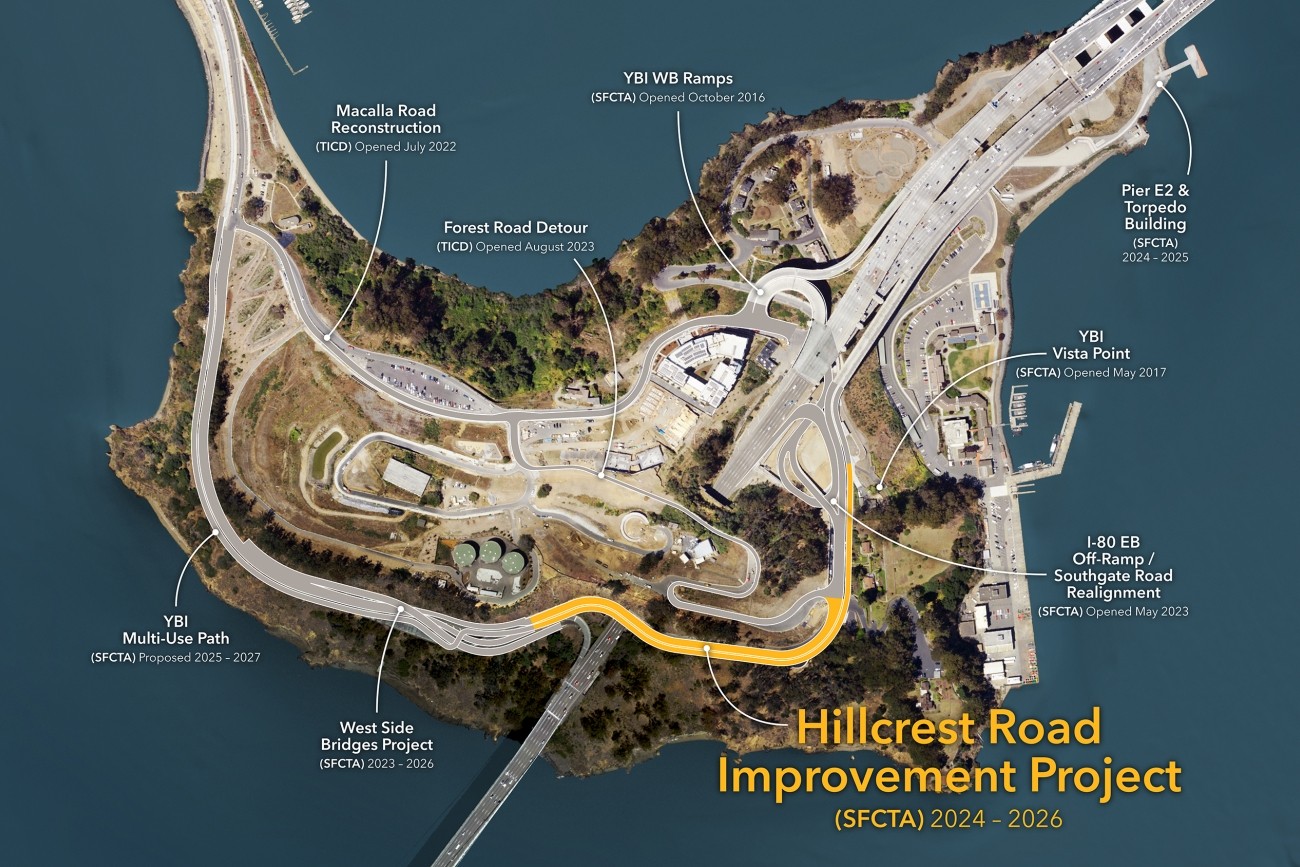The Treasure Island Ferry Terminal Enhancements Project will construct new transit shelters and public restrooms.
The Westside Network Study will analyze the multimodal westside transportation network and offer recommendations to ensure the network is meeting local needs now and into the future.
The Treasure Island Transportation Program will address the island's growing transportation needs with a goal to have at least 50 percent of trips made by transit instead of private vehicles.
The project reconstructed the I-80 eastbound off-ramp to Yerba Buena Island. The project features an innovative design that enhances safety and circulation. The project was completed in 2023 and reopened to traffic.
This project will implement red curb “daylighting” treatments at intersections throughout District 5 in accordance with AB 413, which prohibits vehicle parking within 20 feet of crosswalks. Once complete, District 5 will become the first fully daylit district in San Francisco.
The Vision Zero Freeway Ramps Study will identify improvements for 11 freeway ramps across District 7, District 9, District 10, and District 11 to improve safety and connectivity.
The requested funds for this project will be used for the design phase for new traffic signals at 45th Avenue/Lincoln Way and La Playa Street/Lincoln Way to improve safety and right-of-way allocation, and to reduce vehicle and transit delays associated with the upcoming closure to restrict vehicles on Great Highway due to the passage of Proposition K in November 2024. The scope of work includes all necessary signal infrastructure including new 12” signal heads and mast arms, new signal poles, pedestrian countdown signals, accessible pedestrian signals, and related infrastructure such as curb ramps.
The Duboce Triangle Slow Streets Study will examine opportunities for a more robust, safe, and comfortable north-south bicycle connection through the Duboce Triangle neighborhood, as well as potentially revising vehicle turn restrictions at the Market St/Castro St and Market St/Noe St. intersections, including traffic and circulation analysis of potential changes to street configurations. The study will explore the feasibility of converting existing Class III shared lane bikeways on Sanchez St and Steiner St into Slow Streets, possibly replacing or adding to the existing Noe Slow Street.
The Downtown Extension is a plan to extend Caltrain and future California High-Speed Rail service from 4th and King rail yard to the newly-constructed Salesforce Transit Center.
This planning study will focus on improving safety, accessibility, and overall experience at key intersections along Lincoln Way, next to Ocean Beach, including Lower and Upper Great Highway, La Playa Street, and Martin Luther King Jr. Drive. The project will explore ways to enhance connections for people walking, biking, and driving, with place-making features to create a more welcoming and enjoyable environment for everyone.
The Monterey Boulevard Pedestrian Safety Improvement Project is located along Monterey Boulevard between Acadia Street and San Anselmo Avenue. The Project encompasses the Vision Zero High Injury corridor on Monterey Blvd between Baden and Edna. Monterey is the main arterial street between San Jose Ave/I-280 and Portola Dr/Junipero Serra Blvd/19th Ave. This project aims to address pedestrian safety concerns through roadway paint refreshes, quick build treatments, and minor infrastructure changes to prioritize pedestrians and improve overall travel on the project corridor.
The SFMTA is implementing quick and effective traffic calming measures at locations in District 11.
San Francisco Public Works is set to improve safety, walkability, and accessibility at the intersection of Clement Street and 6th Avenue in the heart of the Inner Richmond. This high-traffic location connects the community to local businesses, cafes, shops, schools, and community spaces like the Richmond Branch Library, George Peabody Elementary, and Roosevelt Middle School.
This project will upgrade the roadway to modern roadway and seismic standards and provide additional space for pedestrians and bicyclists.
